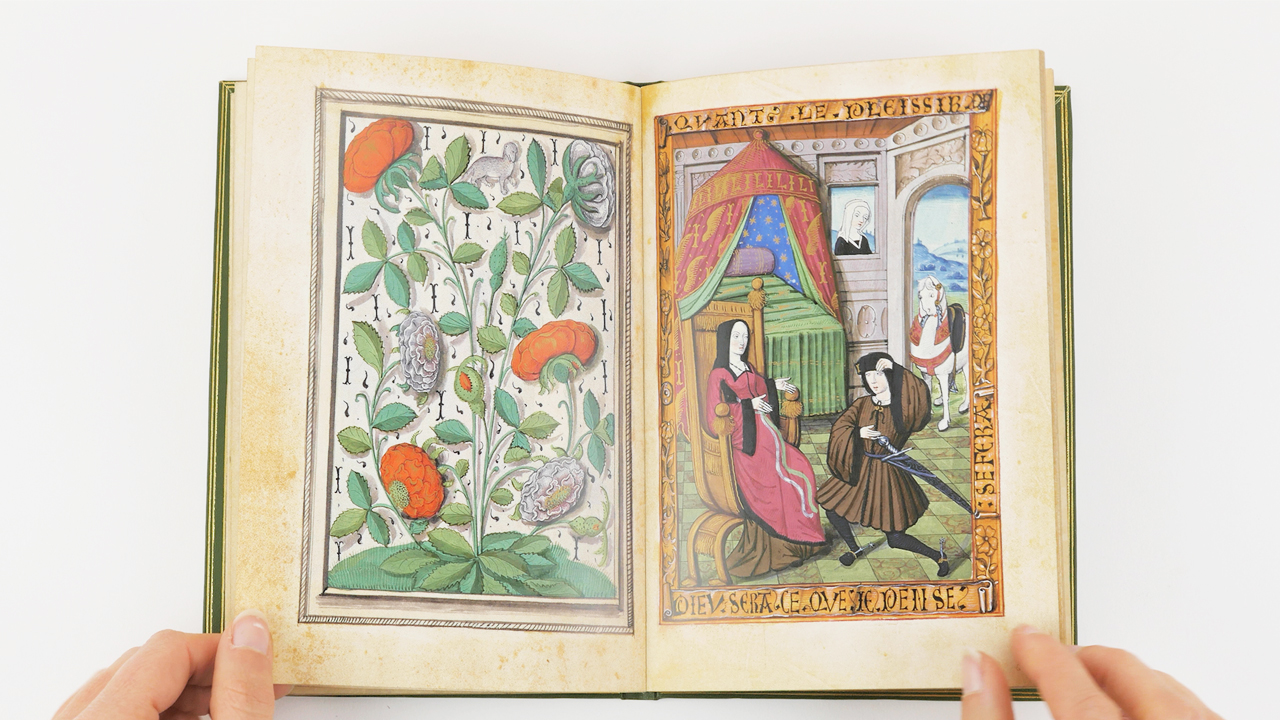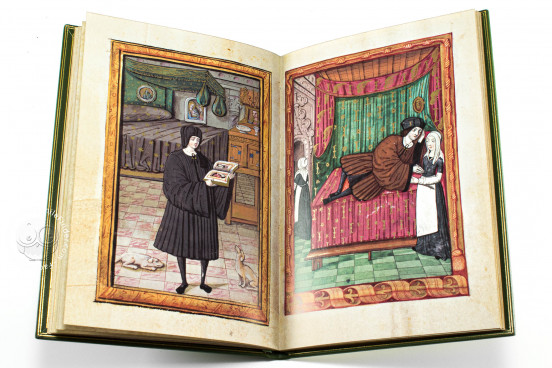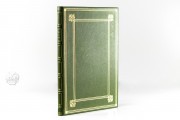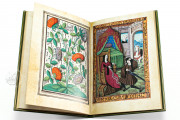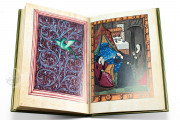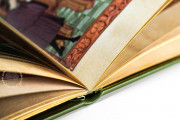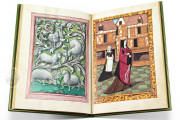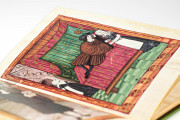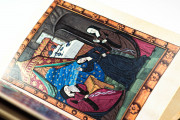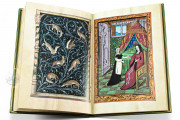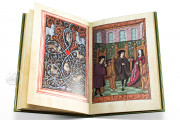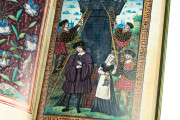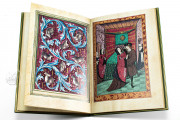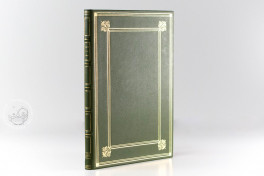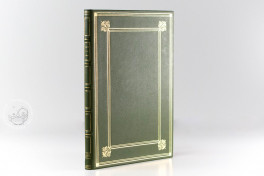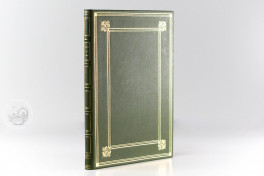The Book of Lovers, made in northern France in the early years of the sixteenth century, is one the most accomplished examples of depictions of a love story from the period between the Late Middle Ages and the Renaissance. Due to the almost complete absence of text, this unique codex relies entirely on its enigmatic and extravagant symbols for expressing its content, and is thus also known as Histoire d'amour sans paroles (love story without words). The illustrated scenes and ornamental pages tell the story of a woman and a man experiencing all the stages of romantic love: confession, frustration, desire, jealousy, hope, enjoyment, and regret.
The manuscript is made up of three four-sheet booklets and one three-sheet booklet. Two blank folios divide the tale into three "chapters". The twenty-eight miniatures include one page containing heraldic symbols, fifteen descriptive scenes, and twelve ornamental miniatures that seem to explain the story's events.
A Mysterious Love Story to Be Deciphered
The miniature's style, the details of clothing and architecture suggest that the manuscript was produced in the early sixteenth century in northern France (possibly in Paris, Tours, Bruges, or Rouen) by an artist who produced no other known works and about whom no information is available. The unknown artist drew inspiration from an engraving by the Master PW of Cologne, active between 1499 and 1503—at the time, engravings of this kind were very popular throughout Europe. Many of the animals in the Book of Lovers are reminiscent of sixteenth-century playing cards.
This charming manuscript can be deciphered through three different levels of interpretation: firstly, the story is based on literary topoi such as the garden, the mirror, the comb, or the black tower, which were common in contemporary love poetry, courtly literature, particularly in the Roman de la Rose. But the characters' feelings, and thus the reasons why they take certain actions, couldn't be understood without decrypting the meaning of colors—for instance, black symbolizes the agony of love, while red and green represent the alchemic concept of sinople (where red stands for men's vigor and green for women's fertility).
Thirdly, the innumerable fruits, flowers, and animals that complement the narration play a leading role in disclosing the manuscript's erotic meanings. Countless symbols point to fertility (roses, pea pods), sexual desire (long hair, mirror, and comb), and virility (swords, horses, and birds). One can also identify a number of plays-on-words deriving from figures of speech—the wings embroidered onto the blanket on sheet 3r might refer to the French idiom avoir coeur sous aile (to have one's heart under a wing), which means "being in love".
A Romance Without Words
The Book of Lovers is in sharp contrast with sixteenth-century literature, in which words played a predominant role. The only textual elements are two French sentences written on the border of two miniatures on fols. 9r and 11r. With almost no text to help readers understand the story, one must carefully analyze every element of its iconography—not just the main characters, but also colors, animals, and other allegorical elements.
The Fragmented History of a Cryptic Love Book
The codex, currently featuring an eighteenth-century binding by Joseph Thouvenin, was acquired in 1859 by the Duke of Aumale together with the entire library of Armand Cigogne, in whose catalog it was listed with the code 2706. Presently, the Book of Lovers if kept in Chantilly's Musée Condé with the shelfmark MS 388.
We have 3 facsimiles of the manuscript "Book of Lovers":
- Das Buch Der Liebenden facsimile edition published by Mueller & Schindler, 2005
- Histoire d'Amour sans paroles facsimile edition published by Il Bulino, edizioni d'arte, 2005
- Historia de amor sin palabras facsimile edition published by Eikon Editores, 2005

